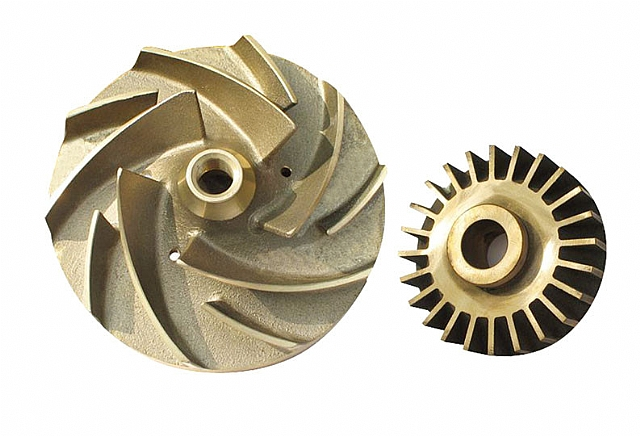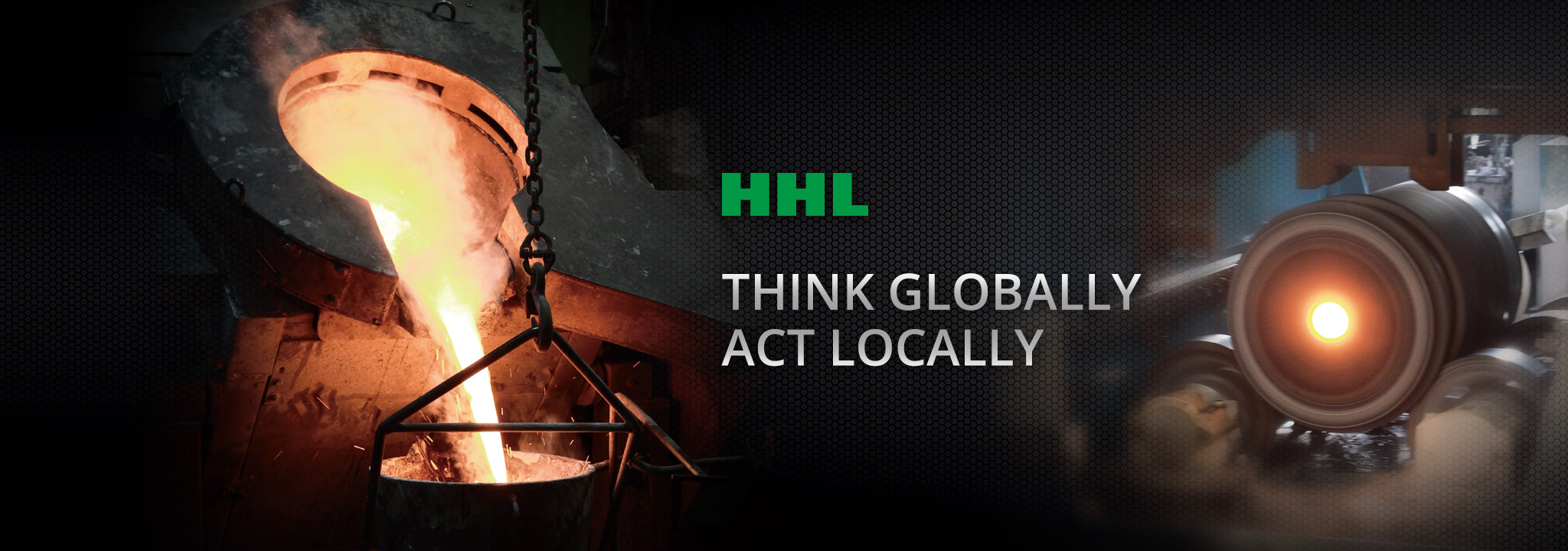Abstract
Copper alloys are often cost-effective compared to other materials, such as stainless steel or titanium. Being in a wide range of properties, making Copper alloys suitable for a diverse range of applications, from electrical wiring to plumbing fittings, architectural elements and so on. What is more, Copper alloys have been applied for centuries due to their distinctive properties, which make them highly desirable in various industries. Copper alloys are known for their commendable corrosion resistance, high conductivity and strength retention.Knowing more about copper alloys can be beneficial for a wide range of applications, including selecting the right material for specific needs, reducing costs. By understanding the properties and capabilities of copper alloys, individuals and businesses can identify opportunities to use these materials to reduce costs without sacrificing performance or quality. With that being said, in this article, we will explore the advantages and features of copper alloy in detail, offering you an outline of the main strengths of copper alloys.
Table of Content
- Introduction to Copper Alloys
- Long Life-span granted by Corrosion Resistance
- High Conductivity, Satisfying Different Conditions
- Resistance to Biofouling and Repels Algae and Barnacles
- Strength Retention, Toughness and Brittleness
- Excellent Machinability and Ease of Fabrication
- Hsin Huan Lung Machinery Industrial Company (HHL)
- Conclusion
Introduction to Copper Alloys
What are Copper Alloys?
Copper alloys are a group of materials that are made by combining copper with other elements to enhance its properties. Copper is a creditable conductor of heat and electricity, has good corrosion resistance and is relatively easy to work with. By adding other metals and elements to copper, the resulting alloy can exhibit a wide range of properties, such as improved strength, hardness, ductility and wear resistance.Types of Copper Alloys
There are many different types of copper alloys, each with its own unique combination of properties and applications. Some of the most common types include brasses, bronzes, copper-nickel alloys and beryllium copper. Brass alloys typically contain copper and zinc, while bronze alloys usually contain copper and tin, though other elements may also be added to achieve specific properties.Production Methods of Copper Alloys
Copper alloys can be produced through a variety of methods, including casting, forging, extrusion and rolling. The choice of manufacturing process depends on the desired alloy composition and the intended application of the material. For example, casting is often used to produce large parts or intricate shapes, while rolling is used to produce sheet or strip material.Copper alloys are used in a wide range of applications, including electrical wiring, plumbing, architecture, electronics and even musical instruments. Their unique combination of properties makes them highly versatile and adaptable to many different uses. Additionally, copper alloys are often preferred over other materials, such as steel or aluminum, due to their superior conductivity, corrosion resistance and ease of fabrication.
After gaining basic acknowledgement of copper alloys through the detailed elaboration on the introduction of copper alloys, let’s move on to the essentials of this article—Advantages and Features of Copper Alloys.
Long Life-span Granted by Corrosion Resistance
Copper alloys are praised for their superb resistance to corrosion. This is due to the natural ability of copper to form a protective oxide layer on its surface when exposed to air, which acts as a barrier against corrosion. The addition of other elements to copper, such as tin, nickel and zinc, can further enhance the corrosion resistance of copper alloys.Copper-tin Alloys
Copper-tin alloys, also known as bronze, are another example of a copper alloy with impressive corrosion resistance. Bronze is commonly used in marine applications, such as ship propellers and bearings, due to its resistance to seawater corrosion.
Copper-tin Alloys
Copper-nickel Alloys
Copper-nickel alloys are highly resistant to corrosion in seawater and are therefore commonly used in marine applications. These alloys can withstand the harsh environment of seawater and resist the formation of marine organisms on their surfaces. Copper-nickel alloys also have good resistance to erosion, making them suitable for use in seawater pumps and other high-velocity applications.Copper-zinc Alloys
Commonly known as brass, Copper-zinc alloys are also highly resistant to corrosion. The addition of zinc to copper forms a protective layer of zinc oxide on the surface of the alloy, which provides additional protection against corrosion. Brass is commonly used in plumbing fixtures, musical instruments and decorative applications.
Copper-zinc Alloys
Generally speaking, the corrosion resistance of copper alloys makes them an feasible material for use in harsh environments, such as marine, chemical and industrial applications. The ability of copper alloys to resist corrosion and maintain their properties over time makes them a reliable and cost-effective choice for many applications.
High Conductivity, Satisfying Different Conditions
Apart from being in a long life span, copper alloys are also known for their high electrical conductivity, which is second only to silver. Copper alloys have a high number of free electrons that can move easily through the material, allowing electricity to flow with minimal resistance. This property makes copper alloys viable for electrical and electronic applications.One of the most common uses of copper alloys is in electrical wiring. Copper wiring is used in homes, commercial buildings and industrial applications due to its high conductivity and low resistance. Copper alloys are also used in electrical connectors, switches and other electrical components that require reliable and efficient performance.
In addition to their high electrical conductivity, copper alloys also have terrific thermal conductivity. This property makes copper alloys ideal for use in heat exchangers and other applications that require efficient heat transfer.
The high conductivity of copper alloys, combined with their other fantastic properties, makes them a popular choice for a wide range of industries, including electrical, electronics, automotive and aerospace. The use of copper alloys can help to improve the performance and efficiency of many products while reducing energy consumption and costs.
Resistance to Biofouling and Repels Algae and Barnacles
Biofouling is the accumulation of living organisms, such as algae, barnacles and mollusks, on surfaces that are in contact with water. Biofouling can cause serious problems in marine environments, where it can reduce the efficiency of ships and offshore structures, increase fuel consumption and contribute to the spread of invasive species.Thankfully, copper alloys have been found to be highly effective in preventing biofouling. The natural antimicrobial properties of copper, combined with its ability to form a protective oxide layer, make it a feasible material for marine applications. Copper alloys can effectively inhibit the growth of microorganisms, such as bacteria and algae, on their surfaces, reducing the buildup of biofouling and improving the performance and efficiency of marine structures.
Copper-nickel alloys in particular, have been found to be highly effective in preventing biofouling. These alloys can resist the attachment of marine organisms and are commonly used in marine applications, such as ship hulls, propellers and piping systems.
Copper alloys have also been found to be effective in preventing biofouling in other applications. For example, copper tubes are commonly used in air conditioning and refrigeration systems to prevent the growth of bacteria and mold on the surfaces of the tubes.
Strength Retention, Toughness and Brittleness

Most copper alloys can maintain their strength and mechanical properties over a wide range of temperatures and environments. Copper-nickel alloys, for instance, have high strength and toughness even at low temperatures, making them suitable for use in cryogenic applications. Copper-zinc alloys, such as brass, are also acclaimed for their high strength and toughness and are commonly used in applications that require good wear resistance, such as worm gears and bearings.
Copper alloys are also known for their resistance to fatigue and stress corrosion cracking. These properties make copper alloys a preferred material for applications that require reliable performance over long periods of time, such as in aerospace and automotive applications.
In addition to their strength retention and resistance, copper alloys also have applaudable mechanical versatility. Copper alloys can be easily fabricated and formed into a wide range of shapes and sizes, making them suitable for a wide range of applications. Copper alloys can be cast, forged, extruded and machined to produce complex shapes and parts. Copper alloys can also be welded and brazed, allowing for the joining of multiple parts and components.
Excellent Machinability and Ease of Fabrication

Copper alloys have excellent machinability due to their unique combination of properties, including their high thermal conductivity, low hardness and good ductility. These properties allow copper alloys to be easily machined, shaped and formed into complex parts and components.
High thermal conductivity means that copper alloys dissipate heat quickly during machining, reducing the risk of thermal damage to the workpiece and the cutting tool. Additionally, the low hardness of copper alloys means that they can be machined using low cutting forces and speeds, which reduces tool wear and increases tool life.
In other words, copper alloys are equipped with excellent machinability. Copper alloys are softer than many other metals, such as steel and titanium, making them easier to machine and form into complex shapes and parts. This property makes copper alloys a suitable material for a wide range of machining and fabrication processes, including milling, turning, drilling and grinding.
Copper alloys can also be easily fabricated using a variety of processes, including casting, forging, extrusion and stamping. Copper alloys are highly ductile, which means they can be easily formed into a wide range of shapes and sizes without cracking or breaking. This property makes copper alloys an ideal material for many fabrication processes, including the production of sheet metal components, wire and tubing.
We have discussed plenty of strengths about copper alloys, however, merely gaining the understanding of copper alloys is still inadequate. No matter how outstanding the material can be, having an inferior command of processing during the manufacturing process is likely to bring out more costs.
Hsin Huan Lung Machinery Industrial Company (HHL)
Hsin Huan Lung is a manufacturer specialized in processing copper alloys that has been in business for over 20 years. We are pursuing the optimal design and production of precision components , providing custom solutions to meet the needs of clients.Outstanding Quality Control
HHL has a comprehensive quality control process in place to ensure that the finished products meet your requirements and specifications. Qualified by ISO 9001:2015, assuring our clients of high and stable quality.Excellent Manufacturing Capabilities
HHL provides 4 major casting techniques. With the constant introduction of high quality equipment, advanced technology and precision inspection instruments into our company, HHL presents products in the best quality.Customize in Small Quantities
From mass production to small-batch production, various kinds of materials, such as copper alloys, special steel and stainless steel are available. Seeking tailored components? Contact HHL to fulfill all your needs.Experienced, Skilled and Professional
HHL builds a team of experienced engineers and technicians who are experts in the application of copper alloys. The knowledge and skills we provide serving custom solutions that meet the unique needs and requirements of our clients.
Contact HHL To Get a Satisfying Order
COPPER: 886-4-23350012STAINLESS STEEL: 886-4-23358196
FAX: 886-4-23350006
MAIL: hhl.sales1@gmail.com
ADD: No. 439, Lane 680, Section 1, Xinan Road, Wuri District, Taichung City
Conclusion
Copper alloys are highly desirable materials due to their excellent properties. Copper alloys are highly resistant to corrosion, highly conductive and highly versatile. Copper alloys are also highly resistant to biofouling, which makes them optimal for use in marine environments. The wonderful machinability and ease of fabrication of copper alloys make them a popular choice for use in manufacturing processes.In this article, we explain the advantages and features of copper alloys. Such as the fact that copper alloys are a group of materials made by combining copper with other elements to enhance its properties and that the addition of other elements to copper can result in a wide range of properties, such as improved strength, hardness, ductility and wear resistance. Simply put, the advantages and features of copper alloy make them an ideal material for use in a wide range of applications, the key benefits of copper alloys are as follows:
- Long lifespan granted by corrosion resistance
- High conductivity, satisfying different conditions
- Resistance to biofouling and repels algae and barnacles
- Strength retention and mechanical versatility
- Excellent machinability and ease of fabrication
Besides, the article also highlights some of the most common types of copper alloys, such as brasses, bronzes, copper-nickel alloys and beryllium copper and that copper alloys can be produced through a variety of methods, including casting, forging, extrusion and rolling, depending on the desired alloy composition and the intended application of the material.
While copper alloys possess excellent properties, such as high conductivity, good corrosion resistance and excellent mechanical properties, they can still be difficult to work with if they are not properly processed during the manufacturing process. This can lead to increased costs and lower product quality.
One of the challenges in processing copper alloys is their tendency to work-harden, which occurs when the material is deformed repeatedly. Work hardening can cause the material to become brittle and prone to cracking, making it difficult to shape and form. To overcome this challenge, manufacturers must carefully control the temperature, strain rate and deformation conditions during processing. This can be achieved through techniques such as annealing, quenching and tempering.
In conclusion, while copper alloys offer many benefits, they can be difficult to work with if they are not properly processed during the manufacturing process. By carefully controlling the temperature, strain rate and deformation conditions, as well as taking care to avoid contamination, manufacturers can produce high-quality copper alloy products that meet the needs of a wide range of industries.


